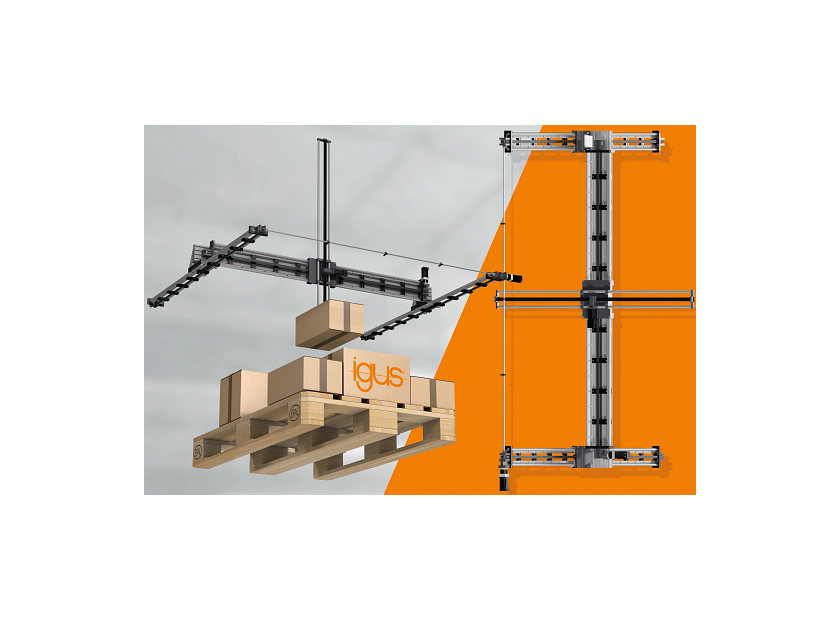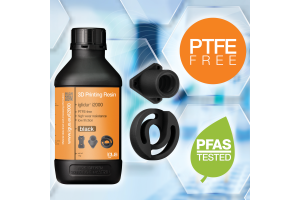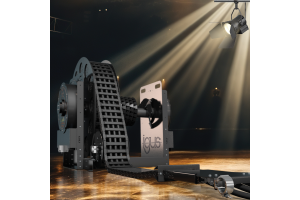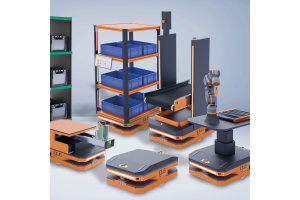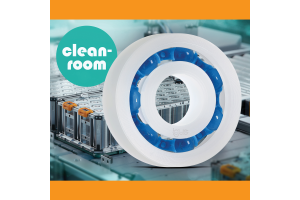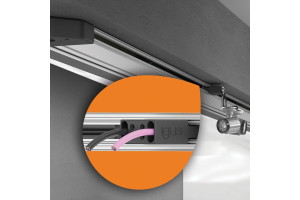Low Cost Automation in XXL: large DIY igus palletiser at a small price
Low Cost Automation in XXL: large DIY igus palletiser from Treotham at a small price
The drylin XXL room linear robot is up to 60 percent more cost-effective than comparable solutions and particularly easy to commission
Treotham is expanding its broad Low Cost Automation range with a new drylin XXL room linear robot. The linear robot has an action radius of 2,000 x 2,000 x 1,500 millimetres and is particularly suitable for palletising applications of up to 10 kilograms. The robot is includes the control system, and is easy to set up and program yourself using the do-it-yourself principle – without the help of a system integrator.
Too expensive to purchase, too complex to program, too complicated to maintain: many small and medium-sized companies shy away from getting started with automation. That way, they jeopardise their competitiveness in the long term. But it’s easy to get started. This is proven by the igus drylin XXL linear robot from Treotham. The DIY kit offers companies the opportunity to quickly and easily put a pick-and-place linear robot into operation for tasks related to palletising, sorting, labelling and quality inspection. Palletising robots created in collaboration with external service providers are very costly and beyond the budget of many small companies. Igus has therefore developed a solution that is many times more cost-effective due to the use of high-performance plastics and lightweight materials, such as aluminium.
DIY kit can be quickly assembled without prior knowledge
The buyer receives the room linear robot as a DIY kit. It consists of two toothed belt axes and a toothed rack cantilever axis with stepper motors and an action range of 2,000 x 2,000 x 1,500 millimetres. In the maximum length, up to 6,000 x 6,000 x 1,500 millimetres are also possible. In addition, the package includes a switch cabinet, cables and energy chains as well as the free igus Robot Control (iRC) control software. Users can assemble the components into a ready-to-use linear robot in just a few hours – without external help, prior knowledge or a long training period. And if additional components such as camera systems or grippers are still needed, users will quickly find them on the robotics marketplace RBTX.
Automation relieves employees
The Cartesian robot is used, for example, on conveyor belts that transport products away from injection-moulding machines. Here, the robot takes parts with a maximum weight of 10 kilograms from the conveyor belt, transports them at a speed of up to 500mm/s and positions them on a pallet with a repeatability of 0.8 millimetres. “Thanks to this automation, plants can relieve their employees of physically demanding and time-consuming palletising work and free up resources for more important tasks.” The system itself does not require any maintenance. The linear axes consist of corrosion-free aluminium, and the carriages move via plain bearings made of high-performance plastic, which, thanks to integrated solid lubricants, enable a low-friction dry operation without external lubricants for many years – even in dusty and dirty environments.
Digital robot 3D twin enables foolproof programming
However, not only the assembly, but also the programming of motion sequences is not an entry barrier. “For many companies that don’t have in-house IT specialists, programming robots is often fraught with problems”, Mühlens said. “That’s why we developed iRC, a free software that visually resembles commonly used office software and allows intuitive programming of movements. What makes it special is that the software is free and the resulting low-code programming can then be used 1:1 on the real robot.” The core of the software is a digital twin of the linear robot, which can be used to define movements with just a few clicks. Even in advance, before the robot is in operation. “Prospective buyers can use the 3D model to check whether desired movements are actually feasible before making a purchase. Furthermore, we invite all interested parties to try out our robots live or via the Internet free of charge. We support them during commissioning and show what is possible with low-cost robots. It makes the investment virtually risk-free.”

